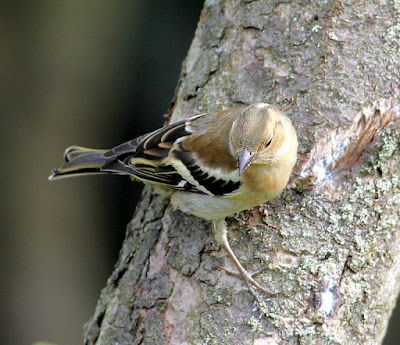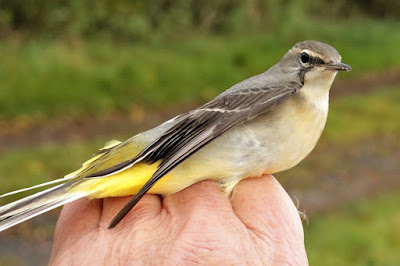Did you ever Dear Reader, take a few days out of normal routine to do a spot of DIY? Like painting a room or tidying the garden in readiness for the burgeoning Spring? And did it ever become more expensive, complicated and fraught than you imagined? I know the answer - “Yes”.
That’s my excuse for not being around to post just lately. Our lounge needed a freshen up whereby the anticipated few days of splashing paint turned into a week or more of hard graft, not least in searching the Internet for rugs, pictures, a smaller TV plus other odds and ends that I didn’t know we needed.
Now we are almost there, just waiting for an Amazon ceramic vase together with a rosewood display stand via LiChongShan. Then maybe Sue and I will finish the job.
So on Thursday morning after a promise to check the parcel tracking and with a 9/10 for effort under my belt I motored up to Oakenclough. Here in the Great Outdoors I met up with Andy and Will at 0700 for the long awaited ringing session. It had been two weeks and more.
The morning was cold with a slight frost and clear skies. Initially we noted a few Chaffinches on the move and a couple of small groups of Siskins.
Will lives fairly close by where his regular top ups of the feeders have ensured that some birds, mostly Goldfinches, stayed around through the many wet and wild periods of October to February.
It came as no surprise when today’s catch of 26 birds showed Goldfinches as the most numerous species of 15 Goldfinch, 5 Long-tailed Tit, 1 Coal Tit, 1 Blue Tit, 1 Chaffinch, 1 Wren, 1 Siskin, 1 Treecreeper. More surprising was just the single Chaffinch in the catch.
It was good to meet up with Siskins again, if only the one in the hand. The Siskin is a periodic irruptive species that has been rather scarce in our part of Lancashire this winter, with very few mentions on local forums. Sightings will surely increase very soon when the species migrates from its central and south easterly concentrations towards its Scottish breeding strongholds. The one below is an adult male.
Here’s a little joke that will ring a few bells for most birders!
Back soon. I just need to keep watch for the delivery van.
Linking this weekend to Eileen's Blog and Anni in Texas.




















_(26223659913).jpg)


























































